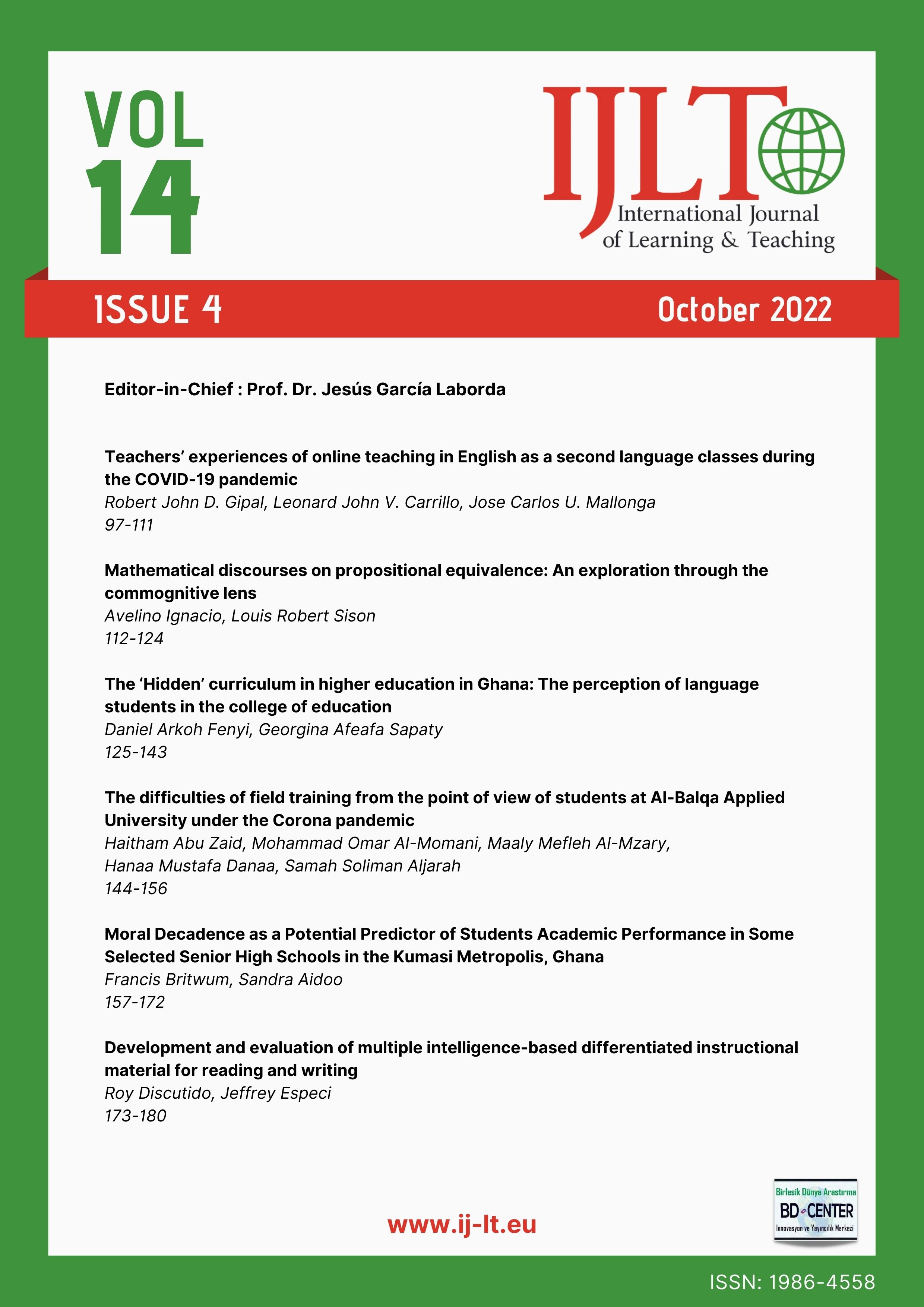Development and evaluation of multiple intelligence-based differentiated instructional material for reading and writing
Main Article Content
Abstract
‘One-size-fits-all’ is a ridiculous statement. Every individual is unique in his or her special way. However, in education, the usual approach is to clamp the learners based on their age, gender or level of achievement. Even though education has entered the new normal, learners are still using the one-size-fits-all material. As teachers, the researchers opted to design and develop instructional materials that could cater to the needs of the learners while tapping their interest to keep them motivated. The researchers utilised Quipper, an online learning management system, as a platform to develop differentiated instructional materials based on multiple intelligence profiles of the grade 11 students in Cainta Senior High School. The respondents of this study were the grade 11 students and humanities and social sciences English teachers who were purposively selected to evaluate the developed instructional materials and be the source of data. This study employed a quantitative method to determine the multiple intelligence profiles of the grade 11 students and evaluate the 2 groups of respondents. Based on the results, most of the learners possess five prominent bits of intelligence. Both the student and teacher respondents believe that the developed differentiated instructional material has realistic/authentic content, promotes autonomy or independent learning, written using clear and simple language and has inputs and elements that are useful for distance learning. It is recommended that teachers adapt the strategy of developing differentiated materials and the utilisation of different available platforms to help the learners cope in the new normal.
Keywords: Multiple intelligence, instructional material, Development, evaluation, teacher
Downloads
Article Details

This work is licensed under a Creative Commons Attribution 4.0 International License.
Authors who publish with this journal agree to the following terms:
- Authors retain copyright and grant the journal right of first publication with the work simultaneously licensed under a Creative Commons Attribution License that allows others to share the work with an acknowledgement of the work's authorship and initial publication in this journal.
- Authors are able to enter into separate, additional contractual arrangements for the non-exclusive distribution of the journal's published version of the work (e.g., post it to an institutional repository or publish it in a book), with an acknowledgement of its initial publication in this journal.
- Authors are permitted and encouraged to post their work online (e.g., in institutional repositories or on their website) prior to and during the submission process, as it can lead to productive exchanges, as well as earlier and greater citation of published work (SeeThe Effect of Open Access).
